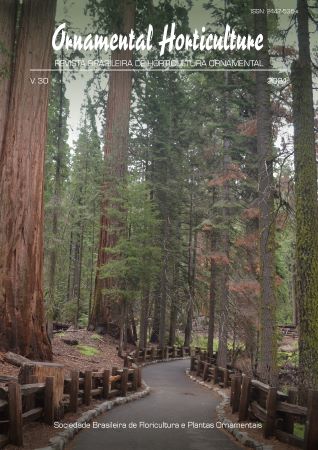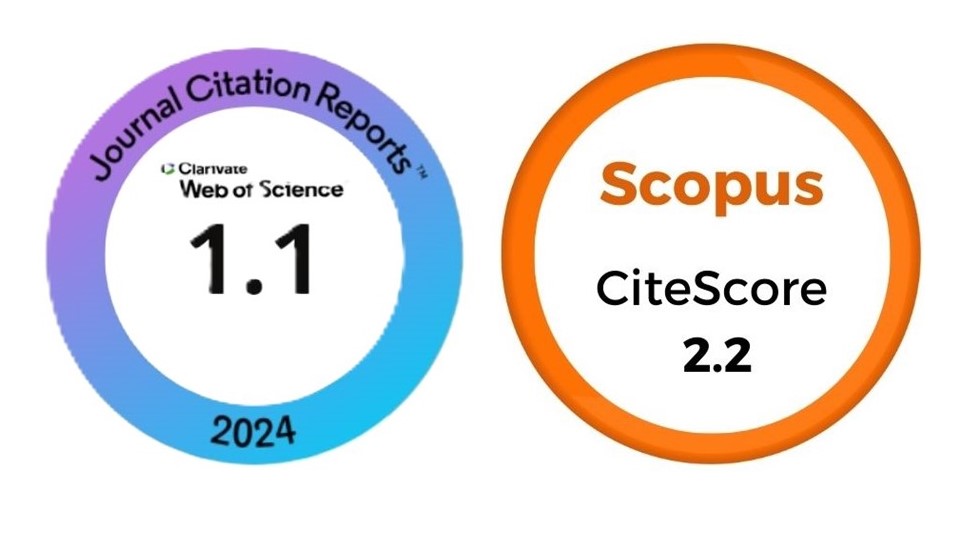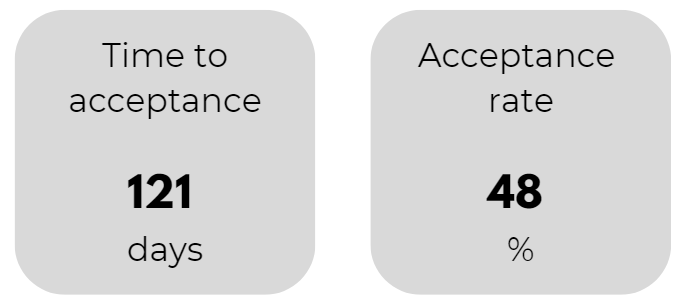As vantagens competitivas e comparativas do cultivo de aglaonemas na cidade de Depok, Indonésia
DOI:
https://doi.org/10.1590/2447-536X.v30.e242657Palavras-chave:
Aglaonema, competitividade, matriz de análise de políticas, planta ornamentalResumo
À medida que a pandemia do COVID-19 diminui, a tendência de demanda por plantas ornamentais começa a diminuir. Para manter sua competitividade, é necessário estudar as políticas governamentais e o desempenho do cultivo de aglaonemas. Os objetivos deste estudo foram: 1) analisar a lucratividade e a competitividade de aglaonema na Indonésia, juntamente com o impacto político, e 2) simular flutuações na competitividade da aglaonema após as mudanças em seus indicadores. A Matriz de Análise de Políticas (MAP) foi empregada para subsidiar os métodos descritivos e quantitativos. O objeto de pesquisa foi a variedade Suksom Jaipong, de cor vermelho-fogo, a aglaonema mais popular da década de 2000. Os dados foram coletados de agricultores de julho de 2022 a novembro de 2022 na cidade de Depok, um dos centros de plantas ornamentais da Indonésia. Os resultados do estudo explicaram que o cultivo de aglaonema na cidade de Depok foi lucrativo e obteve vantagens competitivas e comparativas, indicadas pelos valores de PCR e DRCR de 0,146 e 0,107. A avaliação das políticas utilizando indicadores de Transferência de Produtos, NPCO, Transferência de Entradas, Transferência de Fatores, NPCI, EPC e SRP, mostrou que políticas comerciais como o livre comércio não prejudicaram a competitividade dos agricultores e, pelo contrário, estimularam positivamente a competitividade do aglaonema. As simulações de uma diminuição da produção ou de um enfraquecimento da taxa de câmbio da rupia Indonésia provaram não afectar significativamente a competitividade. Este estudo conclui que a competitividade de aglaonema na cidade de Depok é relativamente elevada, apoiada pela otimização dos recursos locais.
Downloads
Referências
ANACLETO, A.; PAULA, A.; BORNANCIN, D.A. Between flowers and fears : the new Coronavirus Pandemic (COVID-19) and the flower retail trade. Ornamental Horticulture, v.27, n.1, p.26-32, 2021. https://doi.org/10.1590/2447-536X.v27i1.2232
ANACLETO, A.; SCHEUER, L.; CURY, A.C.; DE AZEVEDO DE OLIVEIRA, L.R. Flowers retail trade market: An application of Porter’s Strategic Taxonomy. Ornamental Horticulture, v.26, n.2, p.236-243, 2020. https://doi.org/10.1590/2447-536X.v26i2.2154
ARDESFIRA, G.; ZEDHA, H.F.; FAZANA, I.; RAHMADHIYANTI, J.; RAHIMA, S.; ANWAR, S. Peramalan nilai tukar Rupiah terhadap Dollar Amerika dengan menggunakan metode Autoregressive Integrated Moving Average (Arima). Jambura Journal of Probability and Statistics, v.3, n.2, p.71-84, 2022. https://doi.org/10.34312/jjps.v3i2.15469
ASCIUTO, A.; CARAPEZZA, R.; GALATI, A.; SCHIMMENTI, E. The competitiveness of the Italian flower and ornamental plant sector. New Medit, v.7, n.1, p.26–37, 2008.
ÇELIK, Y., ARISOY, H. Competitive analysis of outdoor ornamental plants sector: A case study of Konya Province, Turkey. Journal of Horticultural Research, v.21, n.2, p.5-16, 2013. https://doi.org/10.2478/johr-2013-0016
DARRAS, A.I. Implementation of sustainable practices to ornamental plant cultivation worldwide: A critical review. Agronomy, v.10, n.1570, p.1-20, 2020. https://doi.org/10.3390/agronomy10101570
DOMINGUEZ, G.B.; MIBUS-SCHOPPE, H.; SPARKE, K. Evaluation of existing research concerning sustainability in the value chain of ornamental plants. European Journal of Sustainable Development, v.6, n.3, p.11-19, 2017.
GABELLINI, S.; SCARAMUZZI, S. Evolving consumption trends, marketing strategies, and governance settings in ornamental horticulture: A grey literature review. Horticulturae, v.8, n.234, p.1-28, 2020. https://doi.org/10.3390/horticulturae8030234
HARYANTO, L. I.; MAULANA, F.A.; SUKRIANTO, S. The impact of Covid-19 pandemic on aglaonema farming income : a comparison between the height and the post trend. Ornamental Horticulture, v.29, n.1, p.87-98, 2023. https://doi.org/https://doi.org/10.1590/2447-536X. v29i1.2575
KHOFIFAH, H.; NUGROHO, T.W.; SUJARWO. Price volatility of ornamental plants in Batu Municipality. Agraris, v.8, n.1, p.106-122, 2022. https://doi.org/10.18196/agraris.v8i1.12342
LAMBRECHT, E.; TARAGOLA, N.; KÜHNE, B.; CRIVITS, M.; GELLYNCK, X. Networking and innovation within the ornamental plant sector. Agricultural and Food Economics, v.3, n.10, p.1-20, 2015. https://doi.org/10.1186/s40100-014-0022-1
MONKE, E.A.; PEARSON, S.R. The policy analysis matrix for agricultural development. Vol 4. New York: Cornell University Press Ithaca, 1989. 279p.
MORADNEZHADI, H.; JASEMI, M.; MAHDIZADE, H. Strategies of gaining competitive advantage based on focusing on customers and market strategy for extension and development of medicinal and ornamental plants enterprises in Ilam Province. Journal of Ornamental Plants, v.7, n.3, p.189-195, 2017.
NACKA, M.; SIMONOVSKA, A.; SKATARIC, G.; DUDIC, B. Opportunities to profit under competitive market conditions. Agriculture and Forestry, v.65, n.4, p.161-174, 2019. https://doi.org/10.17707/AgricultForest.65.4.14
NEDANOV, A.; ŽUTINIĆ, Đ. Cooperative organization as a factor of competitiveness and sustainability in Croatian agriculture. Agriculture and Forestry, v.61, n.1, p.113-120, 2015. https://doi.org/10.17707/agricultforest.61.1.14
OLEWNICKI, D.; JABŁOŃSKA, L.; DUDEK, H. The demand for ornamental plants in Poland after its integration into the EU: A quantitative approach. Bulgarian Journal of Agricultural Science, v.25, n.5, p.932 943, 2019.
OROZCO, N.R.; ANASTASIO, E.V.; GABRIEL, A.L.; CHONTAL, M.A.H. Active role of flower shops in the commercialization of roses. Ornamental Horticulture, v.27, n.4, p.526-534, 2021. https://doi.org/10.1590/2447-536X.v27i4.2296
PAIVA, P.D.O.; MICHELE, V.R.; SANT’ANA, G.S. Flower and ornamental plant consumers profile and behaviour. Ornamental Horticulture, v.26, n.3, p.333-345, 2020. https://doi.org/10.1590/2447536X.v26i3.2158
PRADAS, I.G.; RODRÍGUEZ-MAÑAY, L.O.; MARQUES-PEREZ, I. Competitiveness of Ecuador’s flower industry in the global market in the period 2016–2020. Sustainability, v.15, n.7, p.1-12, 2023. https://doi.org/10.3390/su15075821
SANTAGOSTINI, P.; DEMOTES-MAINARD, S.; HUCHÉ-THÉLIER, L.; LEDUC, N.; BERTHELOOT, J.; GUÉRIN, V.; BOURBEILLON, J.; SAKR, S.; BOUMAZA, R. Assessment of the visual quality of ornamental plants: Comparison of three methodologies in the case of the rosebush. Scientia Horticulturae, v.168, p.17-26. 2014. https://doi.org/10.1016/j.scienta.2014.01.011
SANTOSA, E.P.; FIRDAUS, M.; NOVIANTI, T. Daya saing komoditas hortikultura negara berkembang dan negara maju di pasar internasional. Jurnal Ekonomi dan Kebijakan Pembangunan, v.5, n.2, p.68-86, 2018. https://doi.org/10.29244/jekp.5.2.68-86
SIMAMORA, L.; NADAPDAP, H.J. Daya saing dan potensi ekspor melati putih segar (Jasminum sambaac) Indonesia. Jurnal Agrica, v.14, n.2, p.183-194, 2021. https://doi.org/10.31289/agrica.v14i2.5048
TIASMALOMO, R.; RUKMANA, D.; MAHYUDDIN; PUTRA, R.A. Sustainability analysis of ornamental plants farming in Makassar. Ornamental Horticulture, v.27, n.4, p.589-598, 2021. https://doi.org/10.1590/2447-536X.V27I4.2352
VAN HUYLENBROECK, J.; BHATTARAI, K. Ornamental plant breeding: entering a new era? Ornamental Horticulture, v.28, n.3, p.297-305, 2022. https://doi.org/10.1590/2447-536X.v28i3.2516
YEO, L.B. Psychological and physiological benefits of plants in the indoor environment: A mini and in-depth review. International Journal of Built Environment and Sustainability, v.8, n.1, p.57-67, 2021. https://doi.org/10.11113/ijbes.v8.n1.597
ZAHARA, M.; WIN, C.C. A Review: The effect of plant growth regulators on micropropagation of aglaonema sp. Journal of Tropical Horticulture, v.3, n.2, p.96-100, 2020. https://doi.org/10.33089/jthort.v3i2.58
ZARLIANI, W.O.; PURNAMASARI, W.O.D.; GAFUR, N. The behavior and market efficiency of aglaonema ornamental plants in Baubau, Indonesia. Media Agribisnis, v.5, n.1, p.1-8, 2021. https://doi.org/https://doi.org/10.35326/agribisnis.v5i1.1350
Downloads
Publicado
Edição
Seção
Licença
Copyright (c) 2024 Lorenta In Haryanto.

Este trabalho está licenciado sob uma licença Creative Commons Attribution 4.0 International License.








